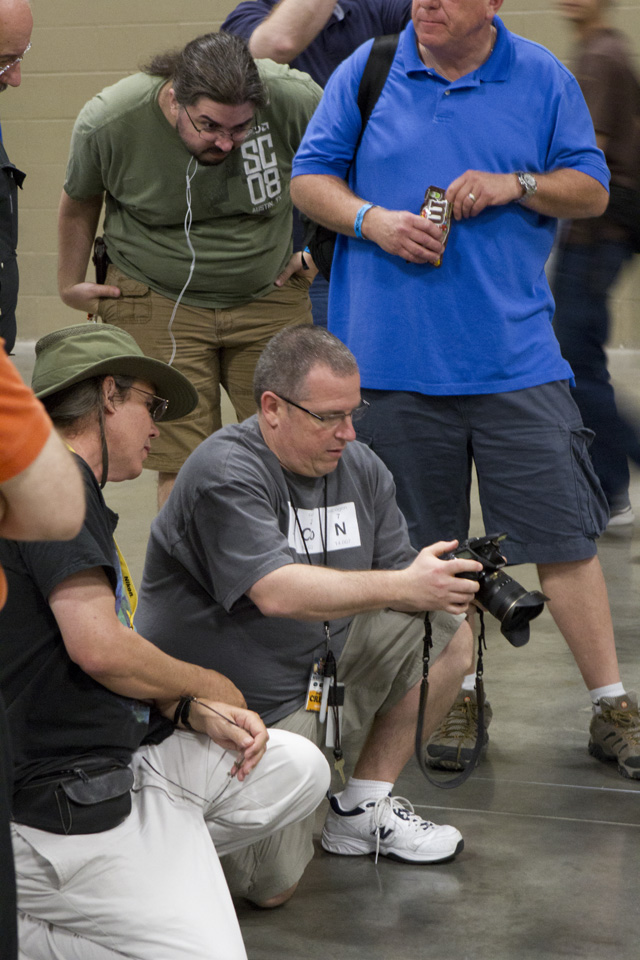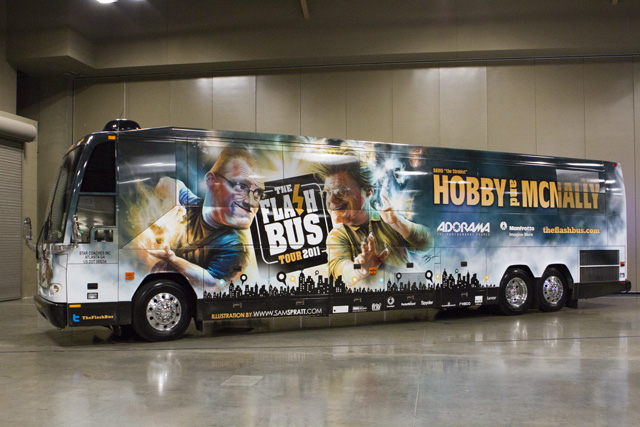When one of my favorite websites announced that he was going to do a local presentation, I jumped at the chance to sign up! Both David Hobby from the Strobist website and Joe McNally would ride a bus around, called The Flash Bus and visit 29 cities.
David was up first. He did a 2 hour presentation and talked to a bunch of slides. He was very informative on how you go about taking pictures with manual camera settings and small flashes.
Then we took a one hour break for lunch. I rushed over to Osmo’s which was a Cajun/Italian food trailer (along with a couple of other trailers) across the street from the Parmer Event center. I was glad I ran over there because the trailers were not prepared for the amount of people.

After lunch, I took a quick, hand-held picture of the bus which was parked inside of the auditorium. I felt bad about not using my flashes to take a better picture. Especially since David talked about taking his picture here. But there wasn’t that much time and there were a lot of people there.
Joe then gave his two hour talk which consisted of taking a bunch of picture with different flash modifiers and using the camera’s automatic TTL system. I didn’t learn anything at all and hated his talk. He did spend about a half of an hour taking a picture of the bus with a bunch of flashes though. And then David and Joe got up on the stage and answered questions for an hour.
I also bought David’s new DVD set called Lighting in Layers.

